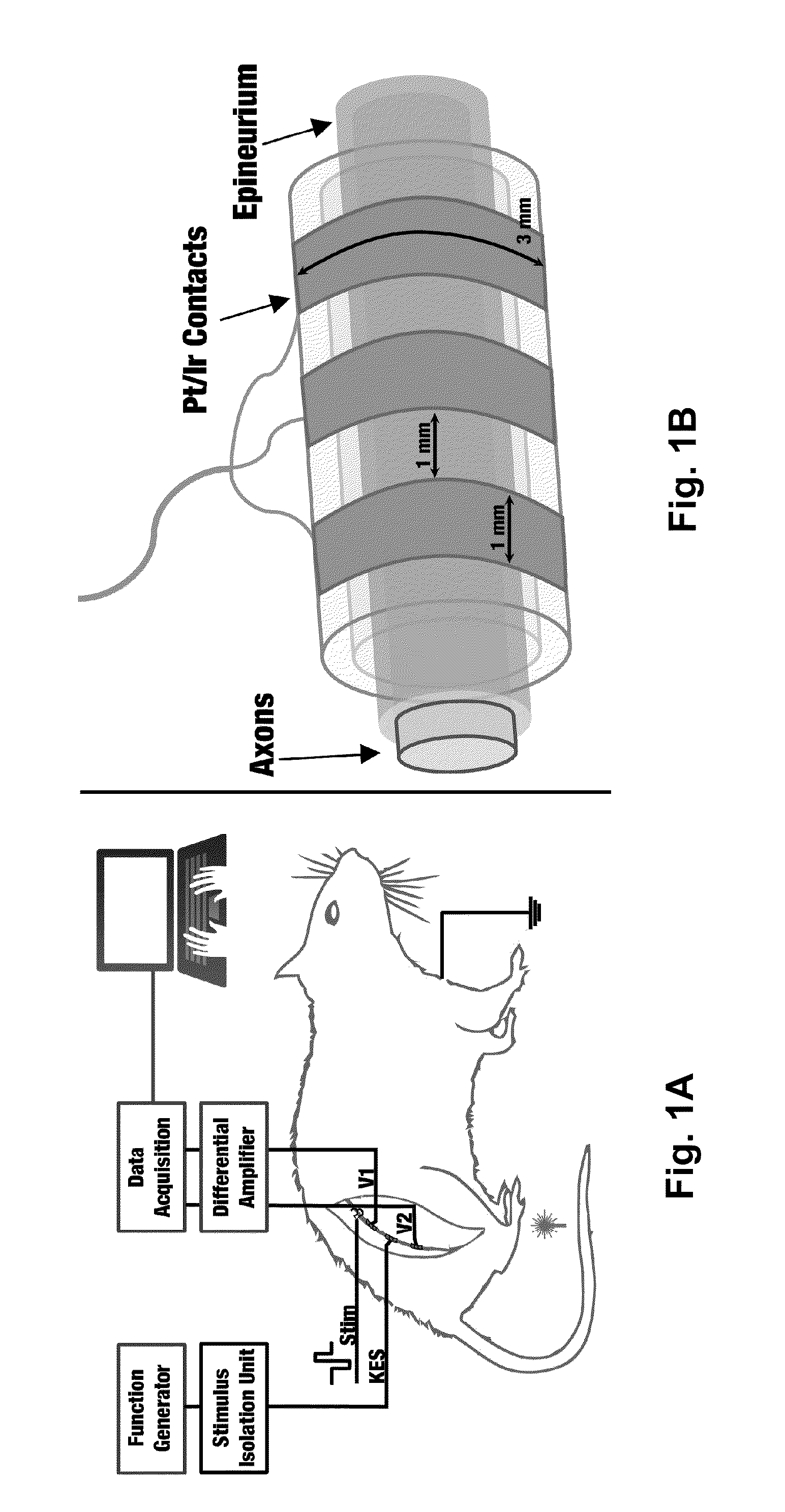Selective block of nerve action potential conduction
a nerve action potential and selective block technology, applied in the field of selective block of nerve action potential conduction, can solve the problems of inability to perform in vivo or chronic applications, unsuitable for chronic applications, and inability to use suction electrodes
- Summary
- Abstract
- Description
- Claims
- Application Information
AI Technical Summary
Benefits of technology
Problems solved by technology
Method used
Image
Examples
experimental preparation
[0036
[0037]In accordance with the present disclosure, in vivo acute experiments were performed on the left and right sciatic nerves of four Lewis rats as well as the vagus nerves of four additional Lewis rats. Rats were anesthetized with 5% isoflurane and fixed in the prone position prior to surgery. Anesthesia was maintained at 2-3% for the first 45 minutes and 1-1.5% for the remainder of the experiment using a nose cone. Ophthalmic ointment was applied to both eyes to prevent drying. The animal's toe pinch reflex was used to maintain surgical anesthetic depth throughout the experiment. Body temperature and circulation were maintained via a heating pad at 37° C. The right thigh of the animal was shaved and the biceps femoris muscle was separated for sciatic nerve preparations. The sciatic nerve was exposed from the top of the biceps femoris to the bottom of the gastrocnemius muscle in the ankle and cuff electrodes were placed around the nerve (FIG. 1A). A total of 3-4 cm was expose...
PUM
 Login to View More
Login to View More Abstract
Description
Claims
Application Information
 Login to View More
Login to View More - R&D
- Intellectual Property
- Life Sciences
- Materials
- Tech Scout
- Unparalleled Data Quality
- Higher Quality Content
- 60% Fewer Hallucinations
Browse by: Latest US Patents, China's latest patents, Technical Efficacy Thesaurus, Application Domain, Technology Topic, Popular Technical Reports.
© 2025 PatSnap. All rights reserved.Legal|Privacy policy|Modern Slavery Act Transparency Statement|Sitemap|About US| Contact US: help@patsnap.com



